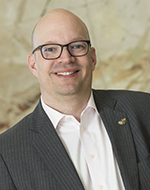Page Content
 This past summer saw record attendance at pride festivals across Canada, yet this was juxtaposed with more visible and vocal attacks against the LGBTQ community, with rainbow crosswalks vandalized and pride flags slashed and burned, including at a local high school in Edmonton.
This past summer saw record attendance at pride festivals across Canada, yet this was juxtaposed with more visible and vocal attacks against the LGBTQ community, with rainbow crosswalks vandalized and pride flags slashed and burned, including at a local high school in Edmonton.
While Canadian society is growing more inclusive, there is still much reluctance and resistance when it comes to supporting LGBTQ youth in schools. Trans students are still frequently denied access to bathrooms in accordance with their lived gender identity, and some parental extremist groups seek to “out” students without their permission.
Recent research indicates that the vast majority of Canadian teachers (85 per cent) now support LGBTQ-inclusive education yet may not have the training or knowledge to know how to effectively create safer schools for LGBTQ youth.
As we begin another school year, here are 10 proven strategies that all schools can engage in to help build inclusive communities for all students:
- Help start, strengthen and sustain gay–straight alliances (GSAs) in your school. Alberta, Ontario and Manitoba all have government legislation supporting a student’s right to create a GSA. The research is clear. GSAs can and do save lives. If you are a teacher, consider being a GSA advisor and display safe space stickers and posters to show you are an ally.
- Staff can volunteer to serve as a “safe contact” in their school. Each month they can bring an update on LGBTQ resources, activities and events to staff and/or school council meetings.
- Update school forms, websites and communications to become gender inclusive. Recognize that gender exists on a spectrum, not a binary.
- Review your library and classroom resources and add age-appropriate LGBTQ books and films. Literature can be a lifeline for many youth. Students need to see themselves in the word and the world around them.
Society has changed rapidly, yet schools often fail to reflect this diversity and remain very socially conservative spaces.
- Encourage your school board to pass comprehensive sexual orientation, gender identity and gender expression policies with detailed implementation plans. Policies set clear expectations and authorize all staff to meet their legal obligations and become proactive in creating respectful, welcoming, inclusive and safe working and learning environments.
- Address homophobic and transphobic bullying and derogatory language whenever you see or hear it. Teachers and parents are very important role models. Remember, your silence signals consent and makes you complicit in the act of discrimination.
- Make inclusion a priority. Engage in specific LGBTQ professional development for yourself and school staff. Education is the best answer to ignorance. Knowledge is the key to building inclusive human rights cultures in your school, classroom and community.
- Create all-gender universal washrooms in your school. Washrooms can be dangerous spaces for many students, regardless of how they identify. Prioritize safety and inclusion over misinformation and fear.
- Incorporate LGBTQ topics as part of your classroom discussions, curriculum and lesson plans. LGBTQ students need to see themselves in their textbooks and in the halls and walls of their school. Visibility helps to challenge stereotypes and tells LGBTQ youth they exist and are valued.
- Celebrate diversity and disrupt heteronormativity by connecting with local LGBTQ communities and agencies. Invite LGBTQ guest speakers into your classroom. Celebrate important awareness days like National Coming Out Day, Pink Shirt Day, and International Day Against Homophobia, Biphobia and Transphobia. Help show pride in your school and community. ❚
Dr. Kristopher Wells is an assistant professor and faculty director with the Institute for Sexual Minority Studies and Services in the faculty of education at the University of Alberta.
This opinion column represents the views of the writer and does not necessarily reflect the position of the Alberta Teachers’ Association.
